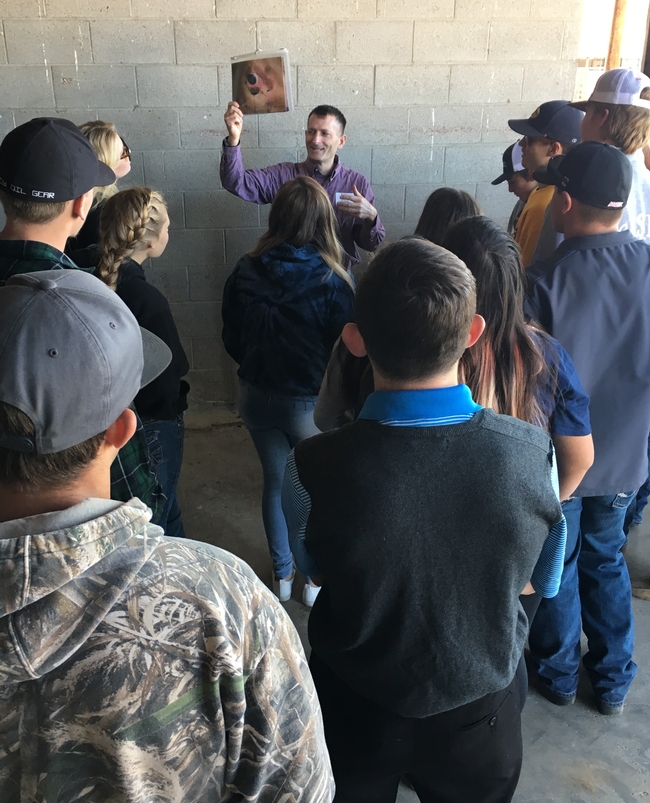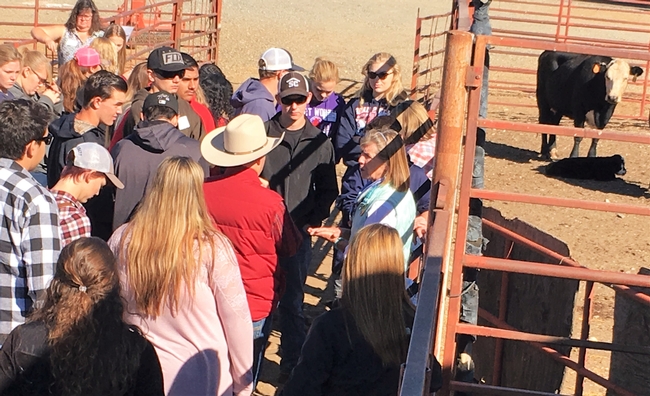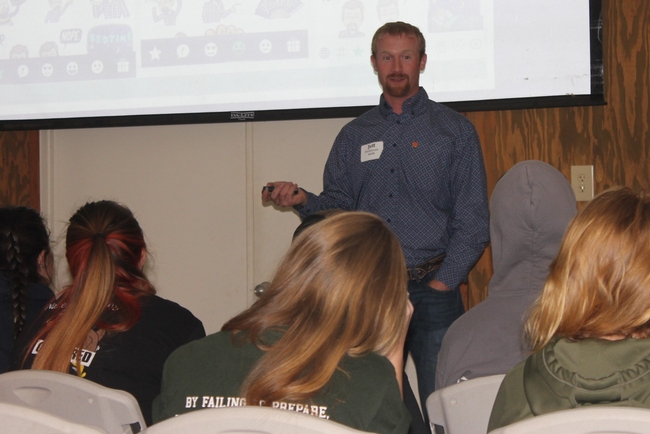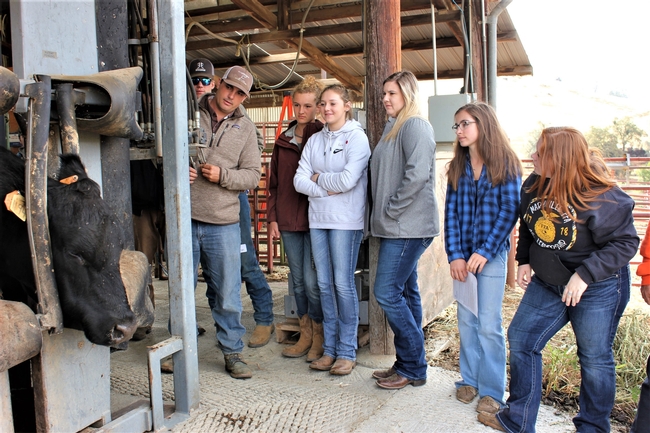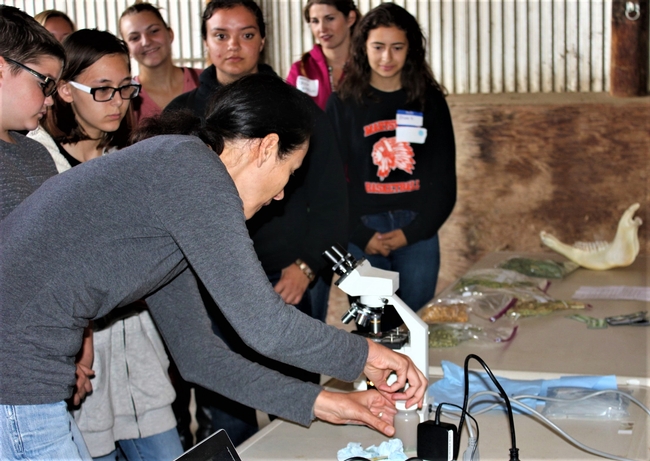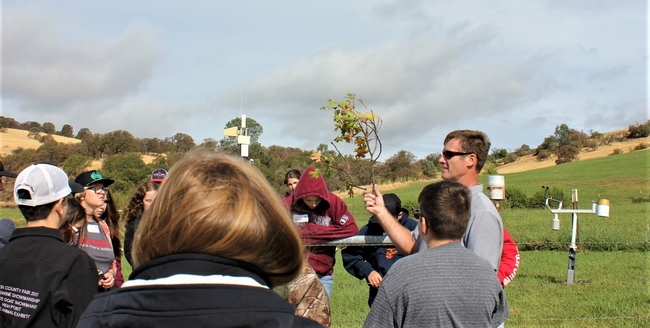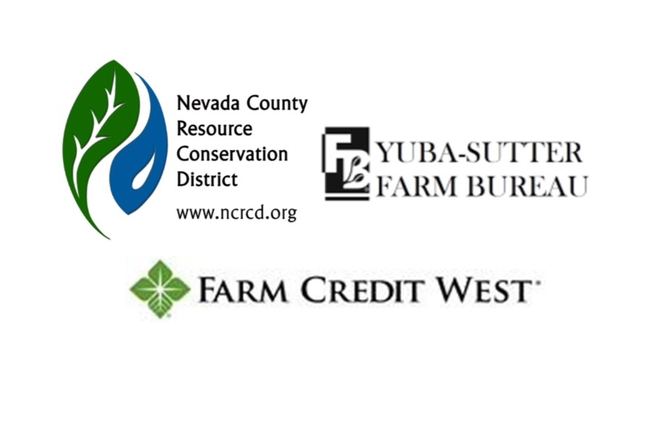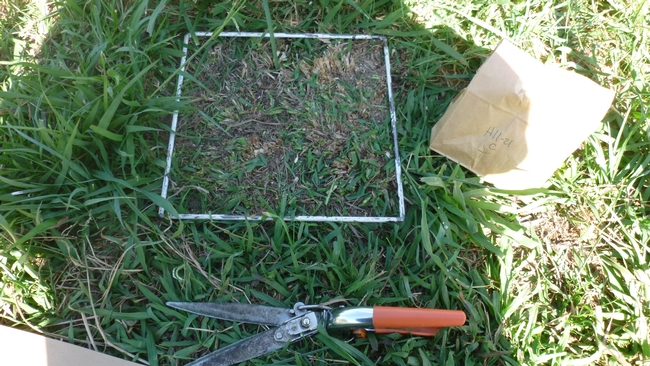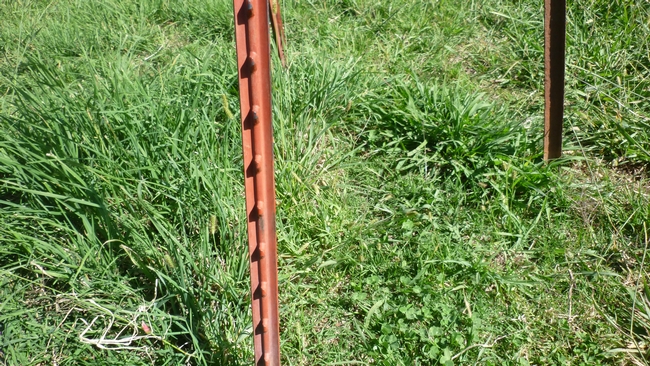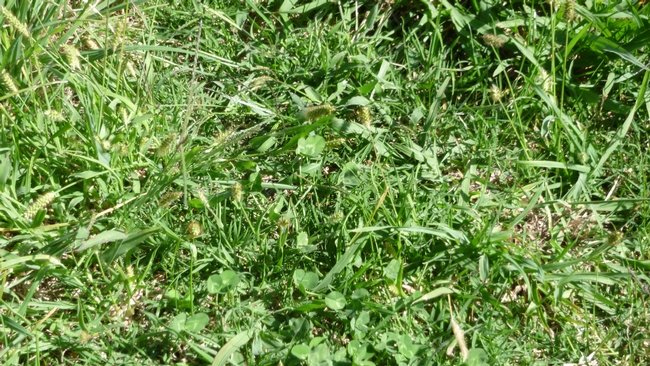- Author: Emily Baumstinger
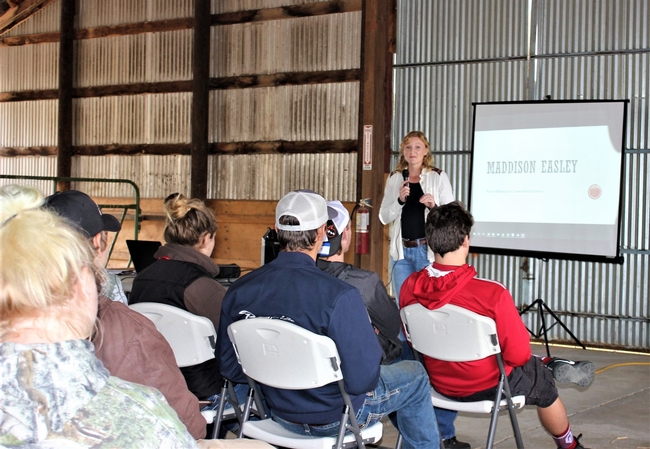
On Thursday October 4th, Sierra Foothill REC hosted its 5th Annual Beef & Range Field Day for high school students enrolled in FFA & 4-H. Following an inspirational keynote address discussing possibilities after high school in research and agricultural careers by Maddison Easley of Placer County Resource Conservation District, the 112 students and their 10 FFA teachers enjoyed the remainder of the day participating in four different outdoor learning stations.
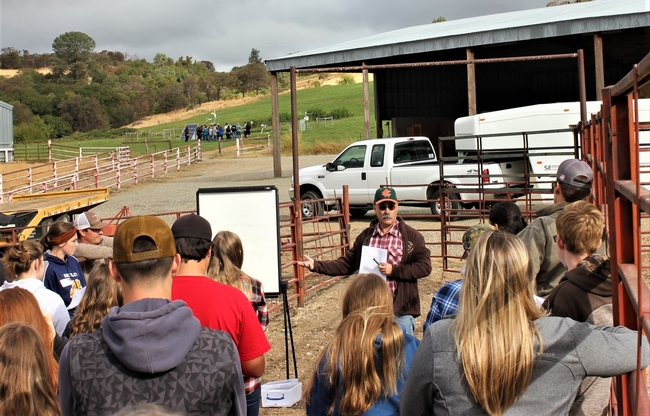
Dr. Gaby Maier of UC Davis Veterinary Medicine gave students a closer look inside cattle with her presentation station discussing ruminant digestion and nutrition. Students were able to look at gut flora and different types of feed.
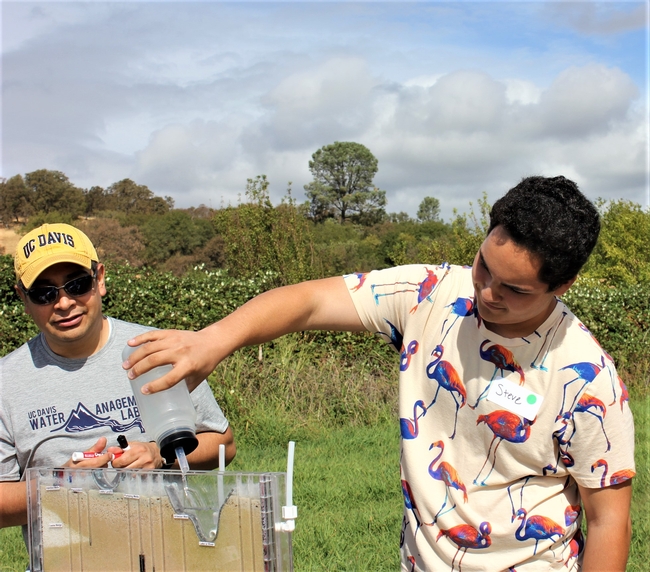
Dr. Sam Sandoval & Dr. Romina Diaz Gomez of the UC Davis Department of Land, Air & Water Resources brought watershed sciences to life with an interactive plexiglass model that demonstrates the movement and flow of groundwater.
SFREC's Director, Jeremy James gave the students an eye-opening tour of SFREC's CIMIS weather station equipment and how changes in climate patterns over time effect California's natural oak woodlands, grasslands and agricultural industries.
A special thank you to this year's event sponsors Farm Credit West, Nevada County Resource Conservation District & Yuba-Sutter Farm Bureau. Additional thanks to Nevada County Resource Conservation District for sending out two volunteers to help facilitate this year's event.
- Author: Nikolai Schweitzer
Yesterday Sierra Foothill Research and Extension Center staff employees participated in the 8th Annual University of California Walks Wellness event at the Yuba River Education Center. This UC-wide event is intended to develop, promote, and support a thriving culture of health & well-being in the workplace, with thousands of employees participating throughout the system. Our walk was organized by Staff Assembly Ambassador, Clint Tipton, who was joined by staff members at the river to exercise on the Douglas McCreary Nature Trail. UC WALKS is a UC Living Well program which promotes wellness & an active lifestyle by encouraging staff, faculty, and retirees to take just 30 minutes out of their day to walk with friends.
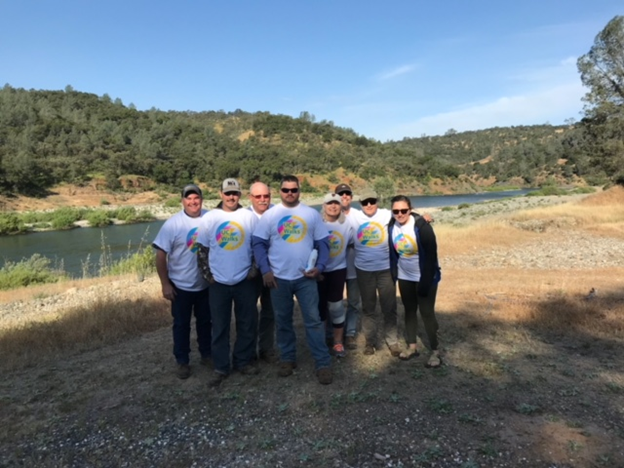
- Author: Alexandra Stefancich

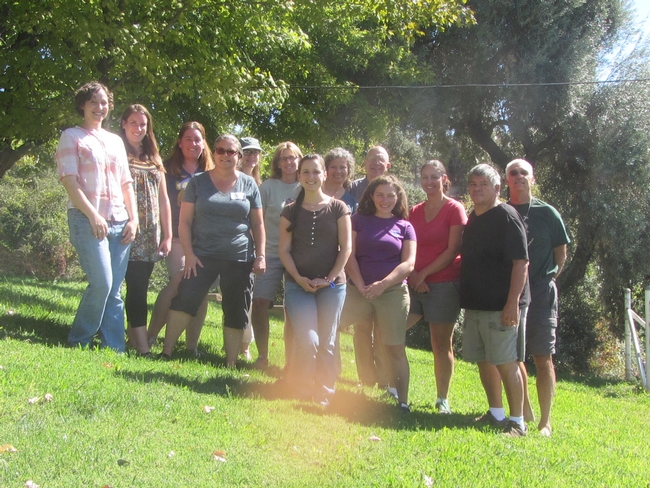
Look out for the return of FIT+ to SFREC in the upcoming year!
- Author: Nikolai Schweitzer
The Sierra Foothill Research and Extension Center in Browns Valley, CA utilizes 130 acres of summer irrigated pasture for cattle grazing. SFREC's irrigation water is supplied by a local water district via pipelines and open ditch distribution sources. The irrigation delivery system applies water through sprinklers, open ditches, and gated pipes. Each irrigated pasture at SFREC is managed for 1) Forage Production, 2) Water Quality, and 3) Soil Quality.
SFREC staff measures forage production in 15 enclosed cages throughout five different irrigated pastures. The treatments within each cage include leaving 4-6 inches of residual grass and measuring Total Forage Production (TFP). Guidelines for general irrigation and pasture management production based on past and current research recommend leaving 4 to 6 inches of residue/grass growth after each grazing period. The basis of this recommendation is to increase forage production (by leaving increased amounts of foliar surface area), improve root development, decrease weeds, cause less stress for forage grasses and increase water infiltration. Total Forage Production is measured by clipping the grass all the way to the ground. This center project is measuring the two treatments (4-6 inches & TFP) on their respective pounds/acre production. Each month (from April through October) forage is clipped from each cage, dried, and weighed (pounds/acre). After the samples are clipped, each enclosed area is leveled to its prescriptive treatment.
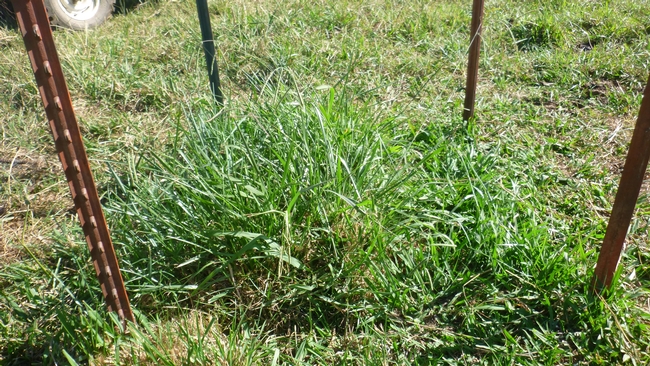
During the last two years of field sampling on irrigated pasture at SFREC, there was an increase in forage diversity in the Total Forage Production subplot. Clovers, birdsfoot trefoil, and filaree became increasingly abundant due to the increased sunlight and less crowding from competitive grasses. While the increase in clover and other forbes growth lends to an increase in forage quality, there is an overall decrease in forage production per acre in the TFP treatments when compared to the treatments with 4-6 inches of residual grass.
Numerous other factors can potentially impact irrigated pasture forage growth. Fertilization (rates, composition, timing), irrigation (frequency, amount, duration), grazing (stocking density, class/age of animal), species composition, physical structures (water location, loafing areas, rubbing zones, mineral location), soil properties, aspect, and slope, are other important components to manage or consider.
- Author: Megan G Osbourn
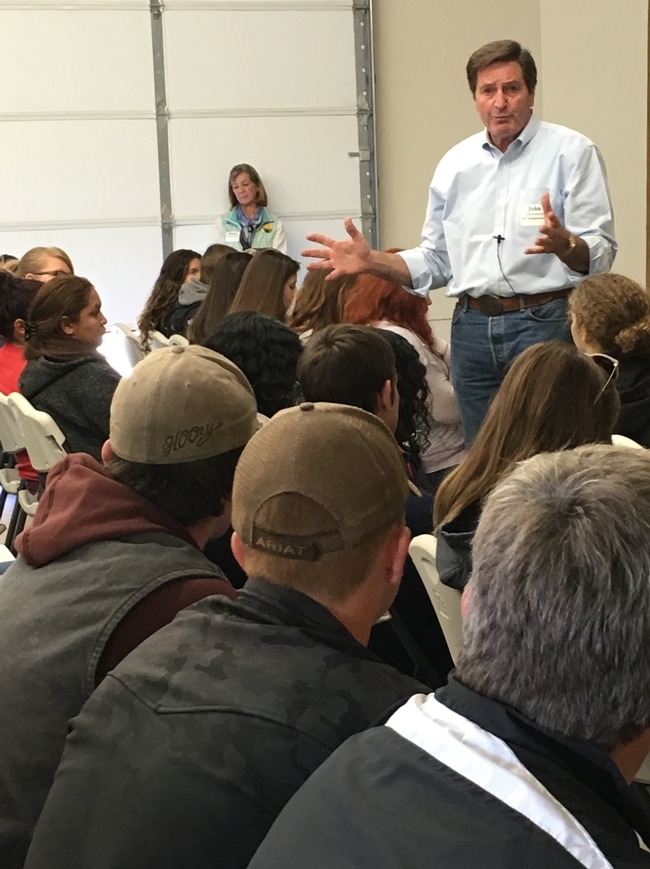
The field day kicked off with a keynote address by Congressman, John Garamendi (CA-3), who spoke with students about the roles they will be able to pursue within agriculture and food productution as they chart out their future careers. Garamendi encouraged his audience to think outside of the box when it comes to creating solutions to the many challenges agriculture will face in years to come.
Following this address the students rotated through five hands-on learning demonstrations developed by UC researchers that explored major topics in beef cattle and rangeland management. Dr. Nancy Martin, DVM, discussed health issues in beef cattle with Dr. John Angelos from the UC Davis School of Veterinary Medicine following up by highlighting his research in the development of a vaccine for pink eye in cattle. UCCE Farm Advisor, Jeff Stackhouse discussed the use of technology in managing livestock and wildlife, while Dr. Roberto Sainz of the UC Davis Department of Animal Science explored the ruminant digestive system. Roger Ingram, UCCE Advisor in Placer/Nevada/Yuba & Sutter counties demonstrated principles related to dryland and irrigated pasture management. Students had the opportunity to evaluate soil properties, classify rangeland plants and observe beef cattle grazing behavior.
This event was made possible by the following Sponsors: PG&E, Yuba-Sutter Farm Bureau, California Beef Council and Farm Credit West. We are grateful for this generous support. The time donated by FFA leaders and UC staff was instrumental in making the third year of this annual event a major success and a great opportunity for students to interact with ongoing research led by the University of California.
Sponsored By:


